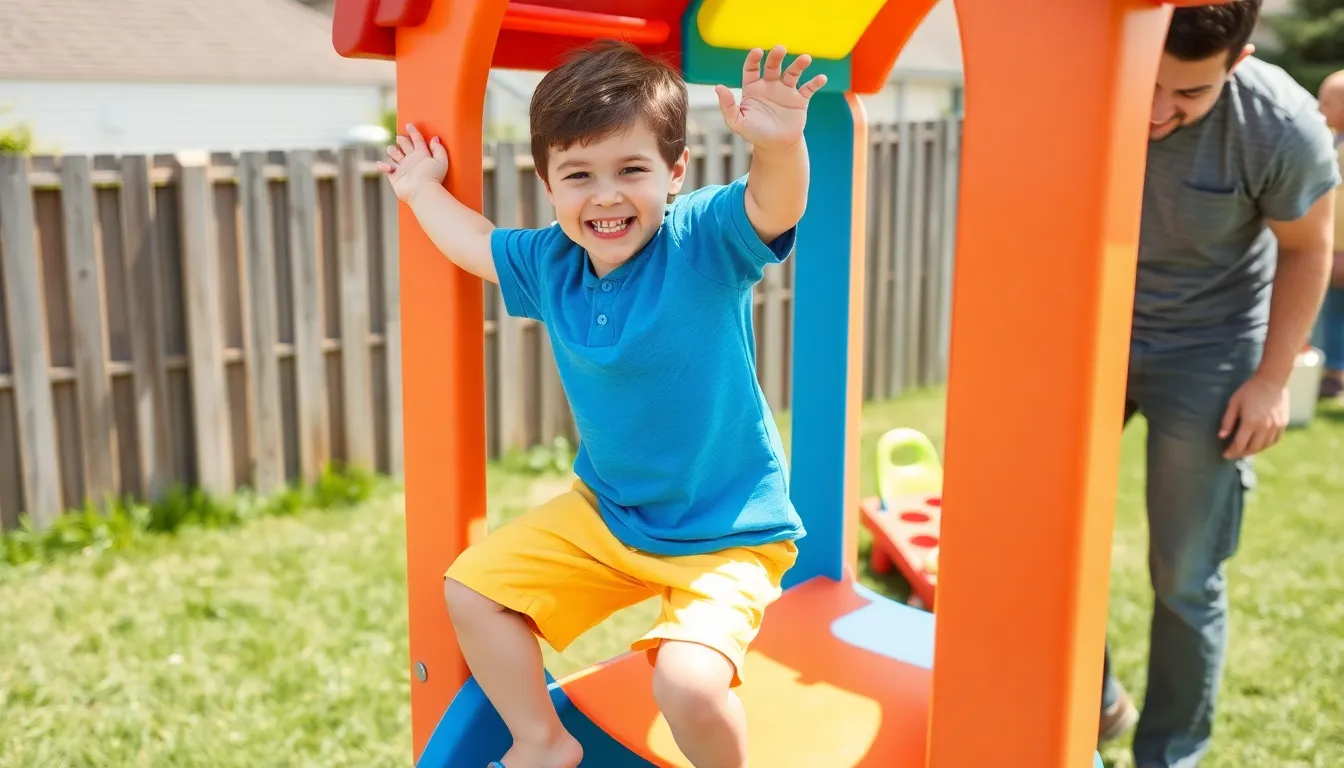In a world where kids seem to have an endless supply of energy and curiosity, ensuring their safety can feel like a full-time job—complete with a superhero cape and a never-ending supply of snacks. From toddler tornadoes to adventurous teens, the stakes are high, and the risks are real. But fear not! With a few smart strategies and a sprinkle of humor, keeping kids safe can be both effective and enjoyable.
Table of Contents
ToggleOverview of Child Safety
Child safety encompasses various aspects essential for protecting vulnerable individuals from potential harm. Parents and guardians face numerous challenges while managing children’s safety. Awareness of risks associated with different age groups aids in creating tailored safety measures.
Toddlers require close supervision as they explore their surroundings. Common hazards include choking on small objects or accidents related to household items. Implementing safe storage practices and using baby-proofing mechanisms can significantly reduce these risks.
As children transition to school age, their safety needs evolve. Strangers pose a unique threat, necessitating discussions about personal safety and safe locations. Teaching children how to respond to risky situations is crucial for their empowerment.
Adolescents experience a greater sense of independence, leading to new challenges. Peer pressure and reckless behavior can compromise their safety. Open communication about decision-making and consequences helps guide them toward safer choices.
Statistical data illustrate the importance of child safety. According to the Centers for Disease Control and Prevention (CDC), unintentional injuries are a leading cause of death for children aged 1 to 14 in the United States. With proactive measures, many of these incidents can be prevented.
Engaging children in discussions about safety ensures they understand the importance of protective practices. Teaching them to identify dangers fosters a sense of responsibility, empowering them to make safer choices. Educators and caregivers should reinforce these lessons by modeling safe behaviors in various environments.
Key Areas of Concern

Child safety encompasses several critical areas, requiring attention and tailored strategies.
Home Safety
Home safety presents numerous potential hazards. Choking risks, falls, and poisoning often occur in households with young children. Secure cabinets and use safety locks to prevent access to harmful substances. Keeping sharp objects out of reach is essential. The CDC reports that in 2020, over 2.8 million children suffered injuries at home, emphasizing the need for vigilant supervision. Implement baby-proofing measures and create a safe play space. Regularly check toys for hazards and ensure that furniture is stable. Engaging children in safety discussions helps them recognize dangers around the home.
Vehicle Safety
Vehicle safety stands as a major concern. Proper use of car seats is crucial for children under 12 years. Ensure that seats are appropriate for the child’s age, weight, and height. According to the National Highway Traffic Safety Administration, proper car seat use can reduce the risk of fatal injury by 71%. Children must also learn to buckle their seatbelts correctly. Establish rules about when and how to enter or exit vehicles safely. Educating kids about road safety prepares them for future independence. Model safe behaviors like using crosswalks and looking before crossing streets to reinforce these lessons.
Online Safety
Online safety requires vigilance in today’s digital age. Teaching children about privacy settings and the importance of not sharing personal information online is essential. Studies indicate that 59% of teens have experienced cyberbullying, highlighting the need for open conversations about online behavior. Encourage kids to report inappropriate content or interactions. Establish rules regarding screen time and monitor social media usage. An informed discussion about recognizing scams and secure online practices empowers children to navigate the internet safely. Foster an environment where children feel comfortable discussing their online experiences.
Safety Measures and Strategies
Implementing effective safety measures enhances child safety at home and beyond. Engaging children in safety conversations promotes awareness and responsibility.
Educational Programs
Educational programs focus on crucial safety skills for different age levels. They create age-appropriate content to teach children how to recognize dangers and respond accordingly. Programs often include role-playing scenarios, helping children practice safety responses in a controlled environment. The Centers for Disease Control and Prevention (CDC) supports initiatives that educate students about personal safety and emergency preparedness. Interactive approaches encourage participation, keeping children actively involved in their learning process. Schools and community organizations can collaborate to bring valuable resources to families, strengthening community-wide safety efforts.
Parental Guidance
Parental guidance plays an essential role in promoting child safety. Parents should lead by example, modeling safe behavior in everyday situations. Open conversations about safety concerns and decision-making skills equip children to navigate risks. Regularly reviewing safety rules at home fosters a culture of safety where children feel comfortable asking questions. Creating a family safety plan assures everyone knows what to do in emergencies. Additionally, using resources like workshops and parenting classes can provide parents with updated safety strategies tailored to their child’s development stage. By maintaining consistent communication, parents can empower children to make safer choices independently.
Role of Community and Government
Communities and governments play crucial roles in enhancing child safety. Effective legislation guides safety measures, establishing protocols that protect children in various environments.
Legislation and Policies
Legislation creates a framework for child safety regulations. Local and state governments enforce laws regarding car seat requirements and mandatory safety training for caregivers. Policies aimed at reducing risks in public spaces also exist, such as monitoring playground safety and ensuring proper supervision in childcare settings. Research shows that consistent enforcement of safety laws leads to decreased injury rates among children, demonstrating the importance of legislative support.
Community Awareness Campaigns
Community awareness campaigns raise consciousness about child safety issues. These initiatives often involve schools, local organizations, and law enforcement to disseminate information to families. Parents receive resources through workshops, newsletters, and social media. Campaigns focus on topics like online safety, stranger danger, and emergency preparedness. By participating in these efforts, communities foster a culture of vigilance and responsibility, proving that informed communities can actively contribute to minimizing risks for children.
Child safety is a multifaceted issue that requires attention from parents educators and communities alike. By implementing age-appropriate strategies and fostering open communication about safety concerns children can learn to navigate their environments more responsibly. Engaging kids in discussions about safety not only empowers them but also helps build their confidence in making safe choices.
As children grow and face new challenges the importance of vigilance remains paramount. Whether at home school or online it’s crucial to create an environment where safety is prioritized. Through collaboration and proactive measures everyone can contribute to a culture that values and protects the well-being of children.




